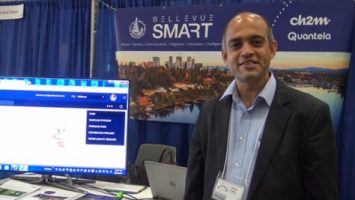
The Fraunhofer Institute for Industrial Engineering IAO in Stuttgart, Germany has no ordinary parking garage. It serves as a living lab to test the Micro Smart Grid and control systems that have been developed in-house.
Energy producers, storage systems, and consumers on the research site all play a part in the testing process. These include a charging infrastructure for electric vehicles with over 30 charge spots, as well as several direct current quick-charging stations with up to 150 kW of power per vehicle. The entire vehicle power supply is produced by a photovoltaic system located on the roof of the parking structure. A lithium-ion battery storage system balances the differences in energy production and consumption. What is unique to this living lab is that all factors are operated under scientific supervision and under real-life conditions. Having real-life data makes it possible for the research team to test various scenarios in a realistic setting.
“The centerpiece of our Micro Smart Grid is the energy management system we developed ourselves,” explains project manager Florian Klausmann. “This system gives us the means to manage and monitor all energy providers, storage systems and consumers within the context of a variety of optimization goals.”
The German government has set ambitious energy policy goals, including renewable energies supplying the majority of power by the year 2050. Though the advantages of sustainable energy sources are obvious, the complete overhaul of the current energy supply system poses challenges to grid stability and security of supply. One of the main goals of the Fraunhofer IAO Micro Smart Grid is the creation of a decentralized approach to the coordination of energy production and consumption. The ability to merge multiple micro smart grids into the larger smart grid will allow energy systems to be integrated in a gradual process that keeps pace with demand.


